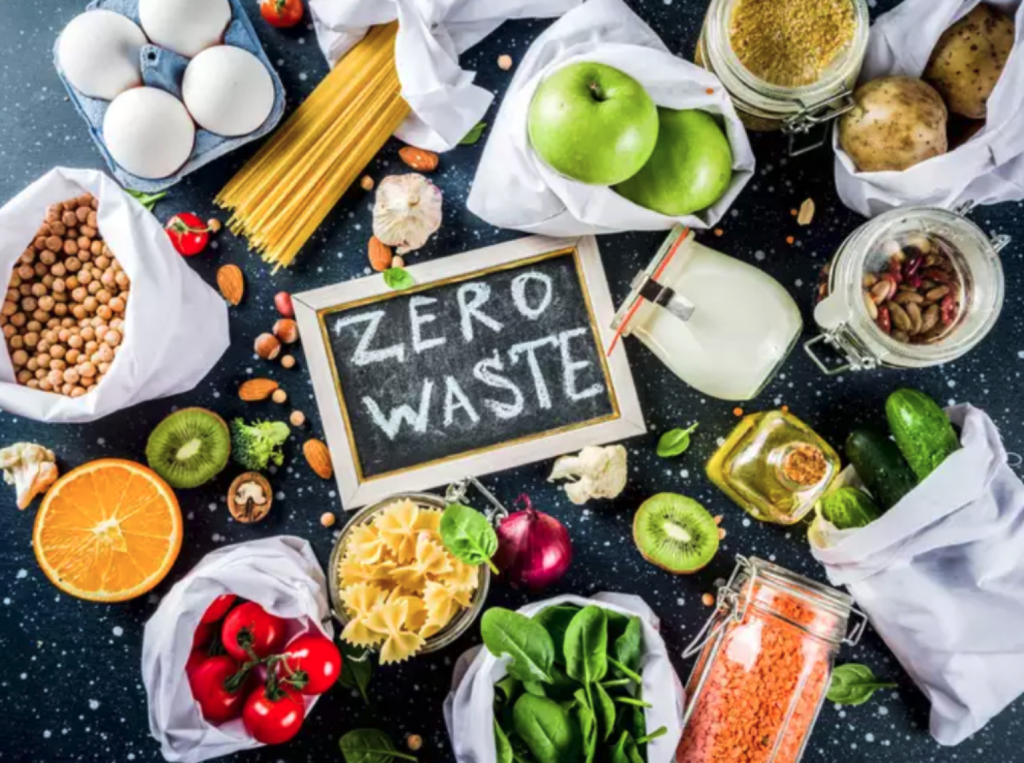Sustainable Cooking: Reducing Food Waste in Your Kitchen
Introduction
In a world where food insecurity coexists with staggering food waste, sustainable cooking emerges as a crucial solution that addresses both environmental and humanitarian concerns. From farm to table, a significant amount of food is lost or discarded, exacerbating the strain on our planet’s resources. As conscientious home cooks and responsible consumers, we hold the power to make a positive impact. In this article, we will explore the concept of sustainable cooking, shed light on the gravity of food waste, and discuss practical strategies to reduce waste in our kitchens, fostering a more sustainable future for all.

The Food Waste Crisis
The food waste crisis is an alarming reality that demands urgent attention. According to the Food and Agriculture Organization (FAO) of the United Nations, approximately one-third of all food produced for human consumption is lost or wasted globally, amounting to nearly 1.3 billion tons per year. This wastage translates into squandered resources, such as land, water, energy, and labor, further contributing to greenhouse gas emissions.
In our kitchens, food waste can occur at various stages, from buying more than we need to neglect leftovers and discarding edible parts of ingredients. As consumers, we play a vital role in shaping the food system, and by adopting sustainable cooking practices, we can help reverse the alarming trend of food waste.
Mindful Meal Planning and Shopping
At the heart of sustainable cooking lies mindful meal planning and shopping. Before heading to the grocery store, take the time to plan your meals for the week. Creating a shopping list based on the ingredients needed ensures that you buy only what you require, reducing impulse purchases that may go to waste.
Embrace the “ugly” produce and seasonal offerings, as they are often equally nutritious and flavorful as their visually pristine counterparts. By supporting local farmers and markets, we also reduce the carbon footprint associated with transporting food over long distances.
Reimagining Leftovers: The Art of Culinary Creativity
Leftovers need not be a source of reluctance; they can be a canvas for culinary creativity. Embrace the art of reimagining leftovers by transforming them into new dishes or incorporating them into future meals. For example, last night’s roasted vegetables can find new life in a hearty vegetable soup, and excess rice can serve as the foundation for a delicious stir-fry.
Batch cooking can also be a valuable practice, where larger quantities of dishes are prepared and stored for later consumption. This not only saves time and energy but also prevents ingredients from languishing unused and ending up in the trash.
Nose-to-Tail and Root-to-Stem Cooking
Incorporate nose-to-tail and root-to-stem cooking practices into your culinary repertoire. This approach involves utilizing the entire animal or plant to minimize waste. By exploring lesser-known cuts of meat and using bones to make nourishing broths, we honor the animal’s sacrifice and maximize the value of each ingredient.
Similarly, root-to-stem cooking involves using all parts of fruits and vegetables, including stems, leaves, and peels. For example, broccoli stems can be grated into slaws, and citrus peels can be candied or used to infuse flavor into various dishes. This mindful approach not only reduces food waste but also adds exciting new dimensions to your culinary adventures.
Composting: Closing the Loop
While striving to reduce food waste, it is essential to acknowledge that some scraps and food waste are inevitable. In such cases, composting becomes a sustainable solution. Composting allows organic matter to break down naturally, transforming it into nutrient-rich soil that can be used to enrich gardens and nourish the earth. Many urban areas now offer composting programs, making it easier for households to participate in this eco-friendly practice.
Educating the Next Generation
Instilling sustainable cooking habits in the next generation is crucial to creating a more food-responsible future. Involve children in meal planning, shopping, and cooking, encouraging them to appreciate the value of food and the significance of reducing waste. By nurturing a connection with food and the planet from an early age, we empower the next generation to be conscientious stewards of the environment.
Conclusion
Sustainable cooking is not merely a trend; it is a necessity for the well-being of our planet and future generations. As responsible consumers, we can actively participate in reducing food waste in our kitchens. By practicing mindful meal planning, embracing culinary creativity with leftovers, and adopting nose-to-tail and root-to-stem cooking, we contribute to a more sustainable and efficient food system.
Each action we take in our kitchens ripples through the food chain, affecting not only our environment but also the lives of those who struggle with food insecurity. Sustainable cooking is a powerful testament to the transformative impact that conscious choices can have, fostering a future where nourishing both people and the planet goes hand in hand. So, let us embark on this journey of sustainable cooking, one thoughtful meal at a time, to build a more resilient and harmonious world for all.

